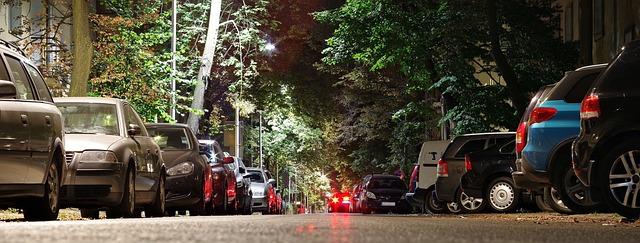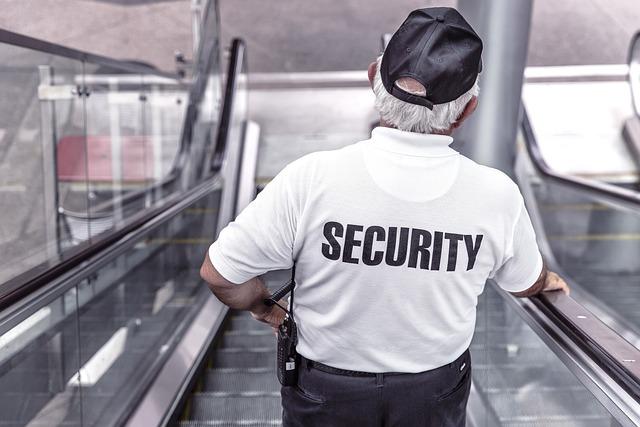Rising Concerns: Urban Safety and Theft in Pakistan Today
In the bustling streets of Pakistan’s urban centers, where the vibrancy of life pulses through crowded markets and neon-lit avenues, a shadow looms large—a growing apprehension surrounding safety and the specter of theft. As cities expand and evolve, the very fabric of daily life is woven with both opportunity and risk. Residents, once buoyed by the promise of modernization, now navigate a landscape marked by rising concerns over personal security and the increasing frequency of theft-related incidents. This article delves into the intricate tapestry of urban safety in Pakistan, exploring the underlying factors contributing to these fears while examining the implications for communities striving to reclaim their sense of security in a rapidly changing environment. Through the lens of everyday experiences, we seek to understand the challenges facing urban dwellers and the resilient spirit that drives them to seek solutions amidst uncertainty.
Exploring the Current Landscape of Urban Safety in Pakistan
“`html
The urban landscape in Pakistan is currently grappling with a multifaceted challenge—safety is becoming a growing concern among citizens. In major cities, the rise in theft and other criminal activities has stirred anxiety, leading to a demand for better security measures. Various factors contribute to this precarious situation: population density, economic instability, and the proliferation of urban slums. As people flock to urban areas in search of opportunities, the pressure on infrastructure and law enforcement continues to mount. In response, community initiatives and local governments are working tirelessly to create safer environments through programs that promote awareness and vigilance among residents.
To illustrate the stark realities of urban safety in Pakistan, consider the following statistics reflecting recent trends in crime rates across major cities:
| City | Theft Incidents (2023) | Increase from 2022 (%) |
|---|---|---|
| K Karachi | 3,500 | 15% |
| L Lahore | 2,300 | 10% |
| I Islamabad | 800 | 25% |
These figures underscore the pressing nature of the issue. To combat this, various stakeholders are advocating for innovative policing strategies and enhanced community collaboration. Some measures being discussed include:
- Installation of CCTV cameras in high-risk areas
- Community patrol groups to encourage local vigilance
- Public awareness campaigns to inform citizens about safety practices
“`
Analyzing Trends in Theft: Causes and Consequences
The rising tide of theft in urban areas of Pakistan can be attributed to a confluence of factors that have manifested over the years. Economic instability plays a significant role, with many individuals finding themselves in desperate situations due to insufficient employment opportunities and inflation. Additionally, the rapid urbanization of cities has led to a sense of anonymity, making it easier for criminals to operate without fear of being recognized. The following issues further exacerbate the situation:
- Weak law enforcement responses
- Lack of community engagement and crime prevention initiatives
- Socioeconomic disparities that breed discontent
The consequences of theft extend beyond the immediate loss of property, affecting the social fabric of communities. Fear and distrust begin to infiltrate neighborhoods, leading to a fragmented society where residents feel isolated and vulnerable. Economic repercussions are also profound, as businesses suffer losses and are compelled to invest in security measures rather than growth. The table below illustrates the impact of theft on various sectors:
| Sector | Impact of Theft |
|---|---|
| Retail | Increased security costs |
| Residential | Declining property values |
| Tourism | Decreased visitor confidence |

Community Engagement: Empowering Citizens for Safer Cities
To foster a more secure urban environment, active participation from residents is essential. Citizens must be empowered to become vigilant stewards of their neighborhoods, collaborating with local law enforcement and community organizations. This can be achieved through various initiatives, including:
- Neighborhood Watch Programs: Encouraging community members to keep an eye out for suspicious activity and report it.
- Safety Workshops: Organizing sessions that educate residents on self-defense, crime prevention, and emergency response.
- Community Meetings: Creating regular platforms for discussion where residents can voice concerns and propose solutions.
Moreover, technology offers new avenues for enhancing public safety and community engagement. Mobile applications can be developed that allow citizens to report crimes and suspicious activities in real-time, facilitating faster responses from authorities. Local governments can further support this movement by providing resources for community-led safety initiatives, including:
| Resource | Description | Benefits |
|---|---|---|
| Funding for Programs | Monetary support for neighborhood safety initiatives. | Encourages participation and sustainability. |
| Training Sessions | Workshops for first responders and community members. | Enhances preparedness and reduces response times. |
| Community Grants | Financial aid for projects aiming at enhancing public safety. | Stimulates local action and self-reliance. |

Innovative Solutions: Strategies to Combat Urban Crime in Pakistan
Addressing urban crime in Pakistan necessitates a multifaceted approach that taps into technology, community engagement, and policy reform. One effective strategy is the implementation of smart surveillance systems that utilize artificial intelligence to monitor high-crime areas. These systems can enhance real-time responses and reduce crime rates by acting as a deterrent. Additionally, community watch programs should be encouraged, where locals collaborate with law enforcement for proactive crime prevention. Regular workshops can help to raise awareness about personal safety and crime reporting, fostering a sense of responsibility among residents.
Another promising solution is the integration of mobile applications that enable citizens to report suspicious activities swiftly. The data collected can assist authorities in understanding crime patterns, leading to more effective resource allocation. Moreover, investment in urban infrastructure—such as improved street lighting and well-maintained public spaces—can significantly diminish the opportunities for criminal activities. Local governments can also create incentive programs for businesses that invest in security measures, reinforcing a collective effort against urban crime.
Closing Remarks
As we draw the curtains on our exploration of urban safety and theft in Pakistan, it becomes evident that the challenges we face as a society are as complex as the cities themselves. The bustling streets, once vibrant with life and opportunity, now echo with the rising concerns of insecurity and crime. Yet, within these challenges lie opportunities for change, dialogue, and collaboration.
By fostering awareness and encouraging proactive measures from both communities and authorities, we can begin to reshape the narrative of urban existence in Pakistan. A collective effort towards education, technology, and civic responsibility can serve as the bedrock for a safer environment, where trust is rebuilt and fears are diminished.
As we navigate through these turbulent waters, let us remember that urban safety is not merely an issue of law enforcement; it is a reflection of societal wellness and a shared aspiration for a brighter tomorrow. Only through unity and resilience can we transform our cities into sanctuaries of peace, ensuring that their streets resonate not with fear, but with the harmonious laughter and dreams of their inhabitants. The path ahead may be fraught with challenges, yet it is only together that we can pave the way toward a safer urban future for all.



